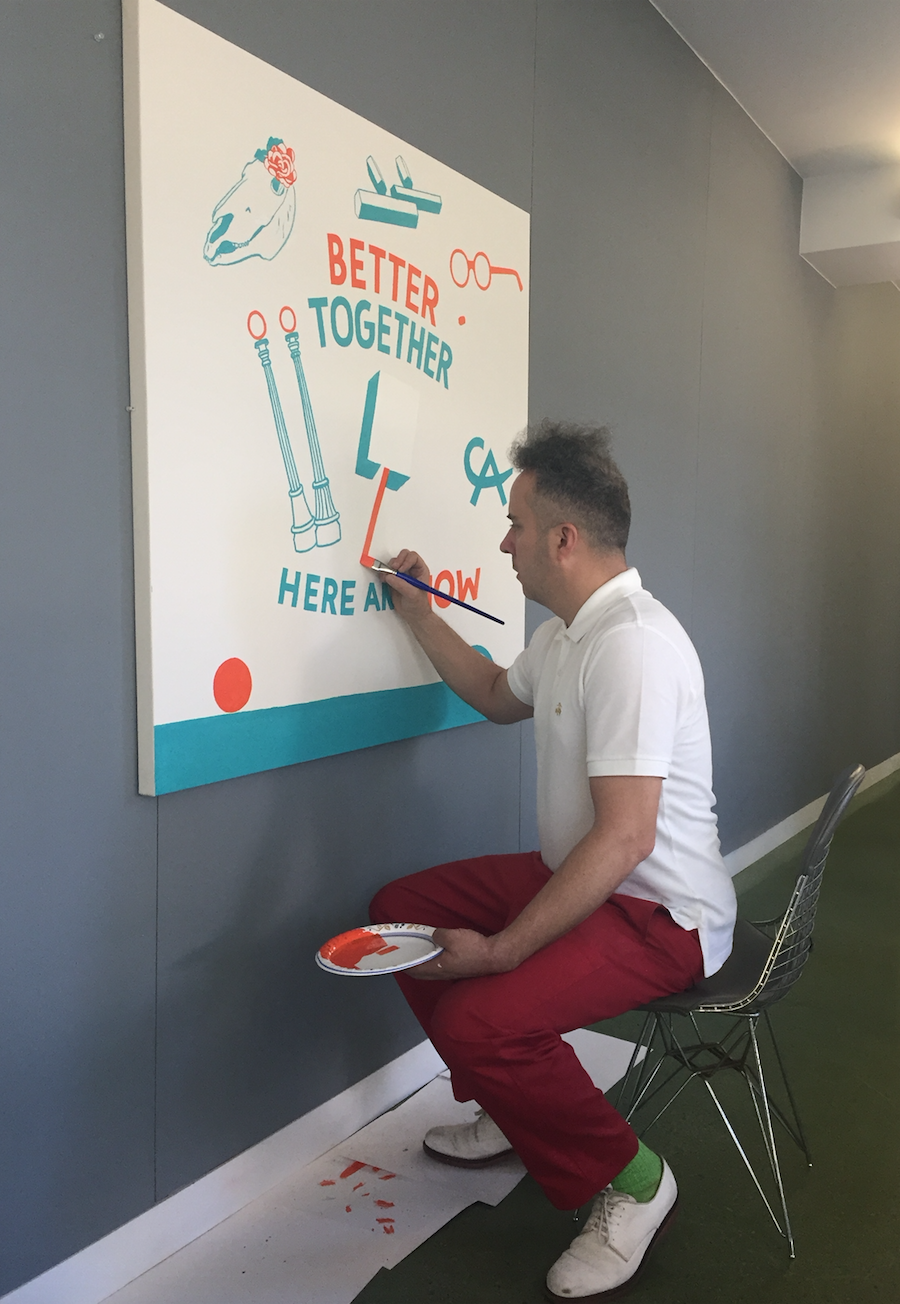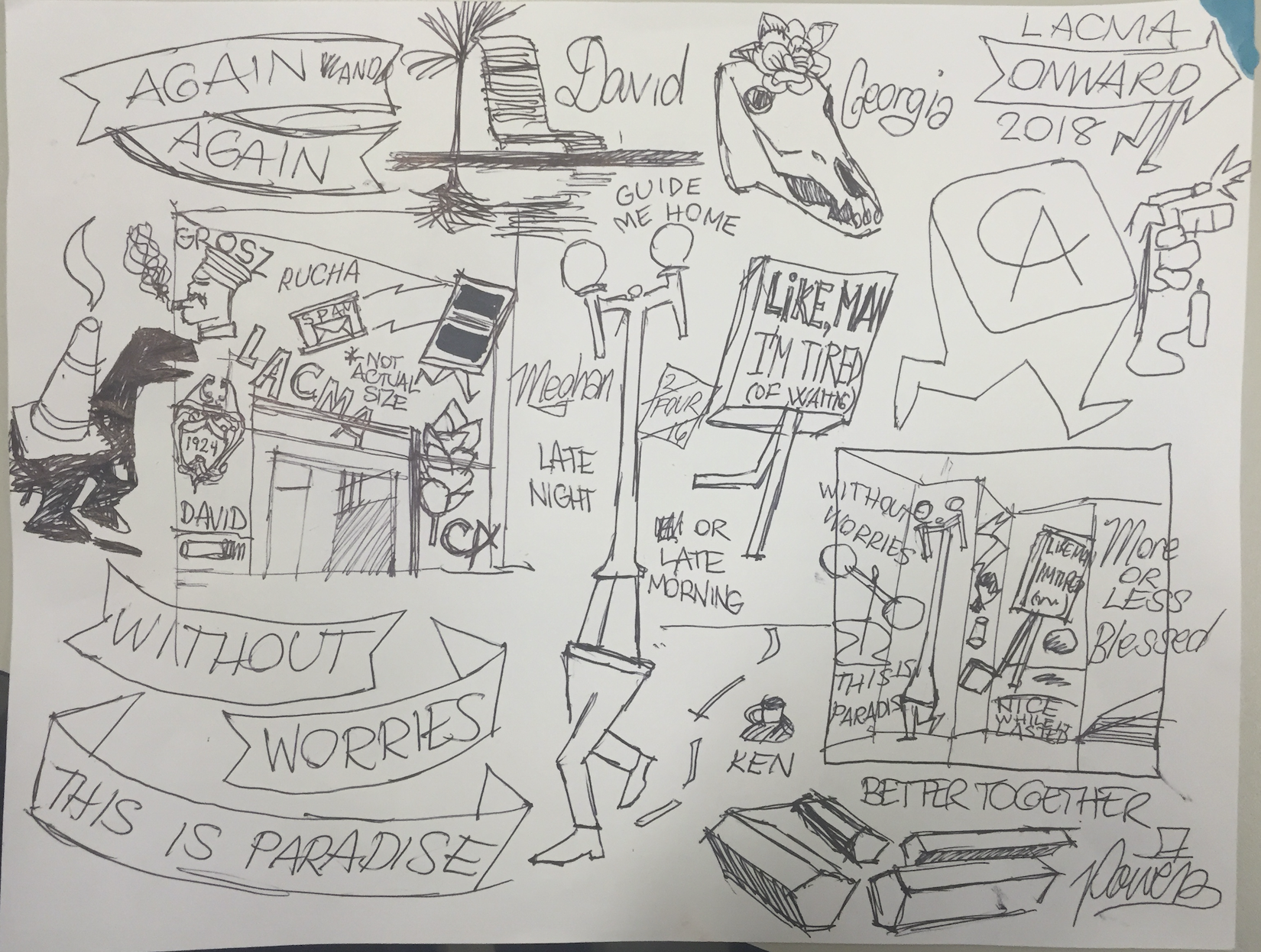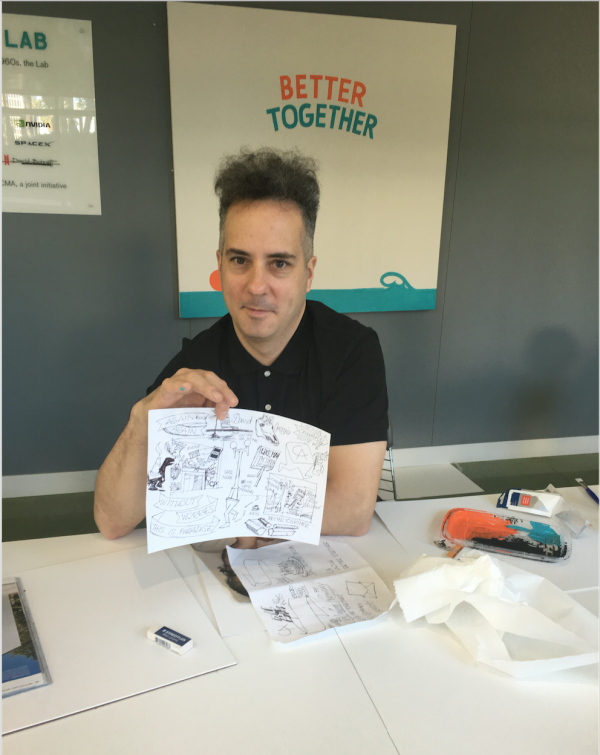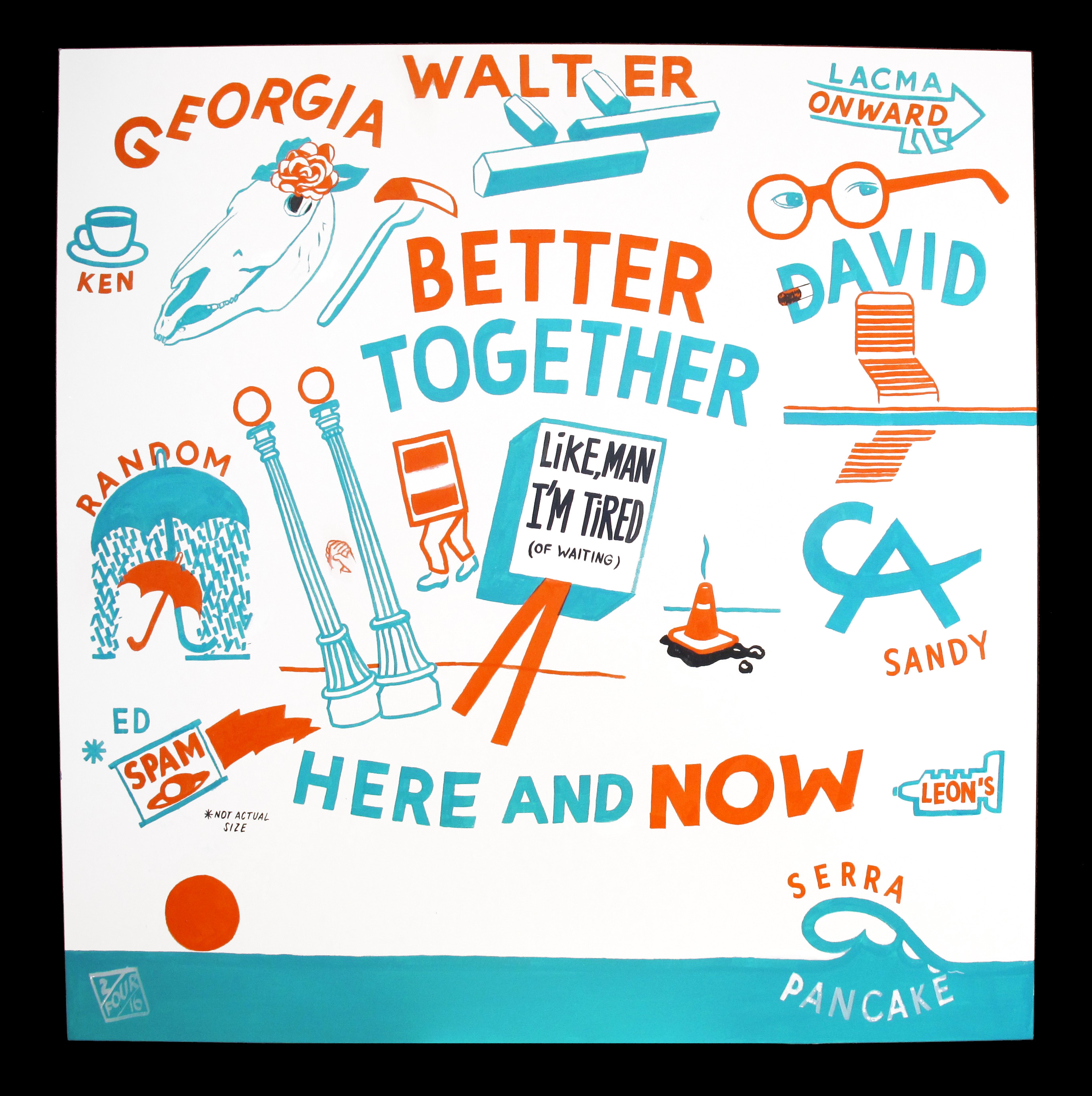LACMA Local is a new membership for Angelenos who want to connect with other LACMA fans while experiencing art at the museum. To give our brand-new initiative a brand-new visual identity, we decided to partner with artists, inviting them to illustrate the program. Our launch artist is Stephen (ESPO) Powers, an artist known for what could be called conceptual signage, and for feats like transforming a Brooklyn parking garage into a gigantic concrete poem. Over the course of the winter, he came up with a collection of icons and illustrations that capture LACMA Local’s freewheeling, social spirit.
Just before Local's official launch, Stephen paid a visit to the museum. We sat with him in LACMA’s Art + Technology Lab, where he’d set up a makeshift studio near the windows overlooking Alexander Calder’s Three Quintains (Hello Girls) (1964) to work on a LACMA-inspired orange-and-turquoise painting.

Tell us a bit about your background.
I started many, many years ago as a graffiti writer. Graffiti’s an advertisement—in my case, it was an advertisement for myself, utilizing a four-letter brand, ESPO. I wrote my name in as many different ways and permutations as possible. And then when I was done with it, I was done with it, in 1999.
At the same time, I was transitioning into art. With graffiti, I only dealt with one word. And with art, I dealt with all the rest of the words. There was a bit of a messy overlap—it became a large part of the story that I was originally a graffiti writer who became an artist. And the reality was, I wrote graffiti to write graffiti, and when I set about making art, I was making art.
We [Stephen and his crew] started out painting a bunch of signs on Coney Island. In working there, we learned a really important lesson about listening to people and delivering what they needed to define the places they were working at. And that’s kind of been a running theme in the 10 years since. We’ve traveled to many places, starting in Philadelphia, my hometown, and then Syracuse, upstate New York, and Brooklyn, and eventually São Paulo in Brazil, Tokyo, Sydney, Australia, Johannesburg, South Africa, Vardo, Norway, and now, in a very interesting way, here at LACMA.

What has your partnership with LACMA been like?
I’ve been in and out of L.A. 10, 15 different times. But what’s really interesting is that this is the first time I’ve really gotten to see LACMA, this property, all the grounds, and all the holdings on the grounds, through, I think, a perfectly seasoned set of eyes.
LACMA has the richest natural resources in terms of [its] collection—and I think, what’s great, too, is how unified it is, and how artists have come here, like James Turrell, Chris Burden, and certainly Alexander Calder—to define the place. They’ve had to work with what was here, what other art was here, and build off it. You kind of envy Calder, because he was here first. As it goes on, the bar gets set higher and higher, and the challenge is greater.
The way I’m answering the challenge is in a very small, quiet way. It was really interesting to just do the website icons, first from afar, from a very removed perspective—it’s like looking at something from outer space, and seeing what the huge geographical features are. But coming here, it’s much more in-depth and in perspective. I’m seeing a lot more details, very interesting small things.
I’m going to make a series of paintings about LACMA, and about being in L.A., the light and experiences, the talks I’ve had with people. And, in a larger sense, it’s going to be about the transitions.
So much of the world is scared of the future, and scared of the present, really. But LACMA’s showing a lot of great faith, real ambition, and real positive energy about the present and the future. It’s exciting to see. It’s exciting to be a part of.
When you were coming up with the artwork for the LACMA Local initiative, what specifically were you going for, from an artistic point of view?
What I was going for was a funny, but also sincere, feeling about the place. I wanted to have fun with it, because I want people to have fun with the artwork and have it be something that’s approachable. I was looking to try to get a density going, I was looking to get something that’s really simple and graphic and clean. But fun, too.
I think the initiative is a really smart one. I think it’s going to bring a lot of people to the museum. There are very few places you can go and really kind of work your brain and relax your brain at the same time. Those places should be cherished—you should hang out at those places and meet people. Meet smart people.
Would you go to a LACMA Local meet-up?
Of course.
No pressure.
I think [Break] is the one. (ed. note: Break is an early morning event during which Locals will watch the sun rise in silence at Levitated Mass.) People want to seize the day here, which is awesome. So sign me up.
LACMA Local is a new membership option that offers access to fun, arts-inspired hangouts every other Saturday. The next Local event, on March 5, is Scavenger—a creative scavenger hunt at LACMA through which Locals will experience the galleries in groups.




